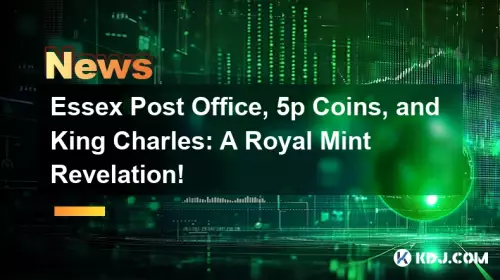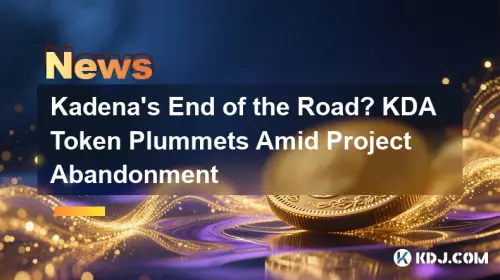 |
|
 |
|
 |
|
 |
|
 |
|
 |
|
 |
|
 |
|
 |
|
 |
|
 |
|
 |
|
 |
|
 |
|
 |
|
Cryptocurrency News Articles
Polygon's Rio Upgrade: A Price Bounce and Payments Revolution?
Oct 09, 2025 at 11:04 am
The Rio upgrade is live on Polygon, promising faster transactions and lower costs. Will this translate to a price bounce for POL and a revolution in web3 payments?

Polygon just got a major shot in the arm with the Rio upgrade, and the crypto world is buzzing. This ain't your typical software patch; it's a full-blown network rehaul aimed at making Polygon the go-to platform for web3 payments and real-world assets (RWAs). Let's dive into what this means for Polygon's price and its future in the payments game.
Rio Upgrade: What's the Big Deal?
Launched on October 8, 2025, the Rio upgrade isn't just about tweaking a few lines of code. It's a fundamental shift in Polygon's architecture, promising:
- Near-instant finality: Say goodbye to transaction reversals.
- Lightweight nodes: Lower barriers to entry for developers.
- Increased transaction speed: Aiming for 5,000 TPS and beyond.
The upgrade introduces key improvements like the Validator-Elected Block Producer (VEBloP) model (PIP-64) and stateless block verification (PIP-72). These changes are designed to make Polygon faster, more efficient, and more accessible.
Will POL See a Price Bounce?
POL, Polygon's native token (formerly MATIC), has seen its share of ups and downs. While it's traded lower than its December 2024 highs, recent gains suggest a potential price bounce fueled by the Rio upgrade. The market often reacts with initial volatility, but a successful and stable rollout could push POL towards new resistance levels.
Analysts are watching closely, and a lot hinges on whether Polygon can deliver on its promises of increased speed and efficiency. If the network performs as expected, we could see increased buying pressure and a sustained upward trend for POL.
Polygon and the Future of Payments
The Rio upgrade isn't just about making Polygon faster; it's about positioning it as a major player in the web3 payments space. With lower costs, faster transactions, and a more reliable network, Polygon is aiming to attract developers and enterprises looking to build the next generation of payment solutions.
The upgrade also aligns with the broader Polygon 2.0 vision, which includes the AggLayer for unifying liquidity across blockchains. If Polygon can successfully integrate these components, it could become a central hub for cross-chain interactions and a formidable competitor to traditional financial infrastructure.
Potential Speed Bumps
Of course, no upgrade is without its potential challenges. Some experts have raised concerns about the VEBloP model's potential impact on centralization. It's a trade-off between efficiency and decentralization, and it's something to keep an eye on as the network evolves.
The Bottom Line
The Polygon Rio upgrade is a big deal. It's a foundational shift that could transform Polygon into a dominant platform for web3 payments and real-world assets. Whether it results in a significant price bounce for POL remains to be seen, but the potential is definitely there.
So, buckle up, crypto enthusiasts! The future of Polygon—and web3 payments—just got a whole lot more interesting. Time to grab a coffee and watch the fireworks. Who knows, maybe Polygon will finally become the talk of Wall Street (or at least, the cooler parts of Brooklyn).
Disclaimer:info@kdj.com
The information provided is not trading advice. kdj.com does not assume any responsibility for any investments made based on the information provided in this article. Cryptocurrencies are highly volatile and it is highly recommended that you invest with caution after thorough research!
If you believe that the content used on this website infringes your copyright, please contact us immediately (info@kdj.com) and we will delete it promptly.





























































